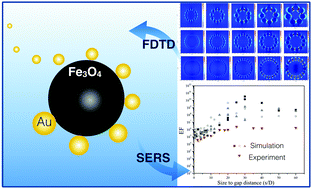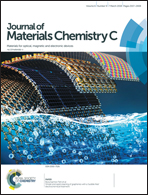Simulation and synthesis of Fe3O4–Au satellite nanostructures for optimised surface-enhanced Raman scattering†
Abstract
Nanomaterials with well-defined structures and optimised electromagnetic hot spots are crucial and highly desirable in surface-enhanced Raman scattering (SERS), but remain challenging to fabricate. In response, theoretical and experimental studies were performed to optimise the parameters of Fe3O4–Au satellite nanostructures for achieving pronounced electric field enhancements. The results indicated that independent control of the size and shape of the satellite nanostructures was insufficient for accurately maximising the SERS effect. A finite-difference time-domain (FDTD) simulation showed that, for ratios of the Au NP size (s) to the nanogap distance between Au NPs (D) ≥20, the magnetic field intensity was the most efficiently enhanced at 785 nm. Using a layer-by-layer fabrication method, satellite structures with the dimensions determined by the FDTD models were generated. The SERS enhancement results from these structures were in agreement with the modelled predictions, emphasising the potential utility of FDTD models in guiding satellite substrate design. For structures with parameters set to the optimised s/D value, the SERS enhancement factor was increased by up to two orders of magnitude. Magnetic satellite platforms optimised via this simulation-based approach possess excellent electromagnetic coupling properties and could assist in the development of new SERS applications.



 Please wait while we load your content...
Please wait while we load your content...